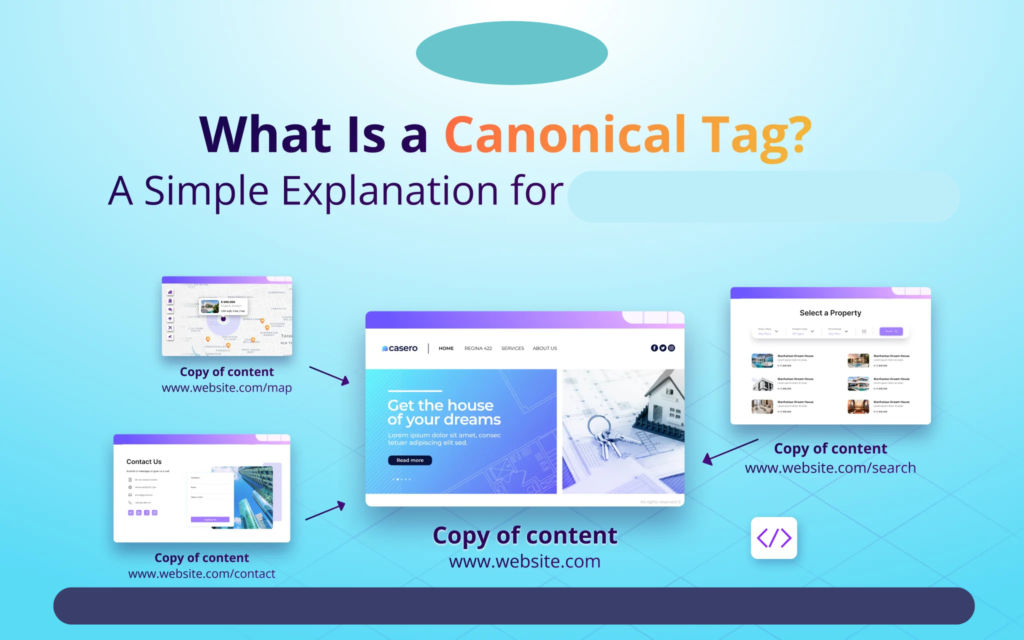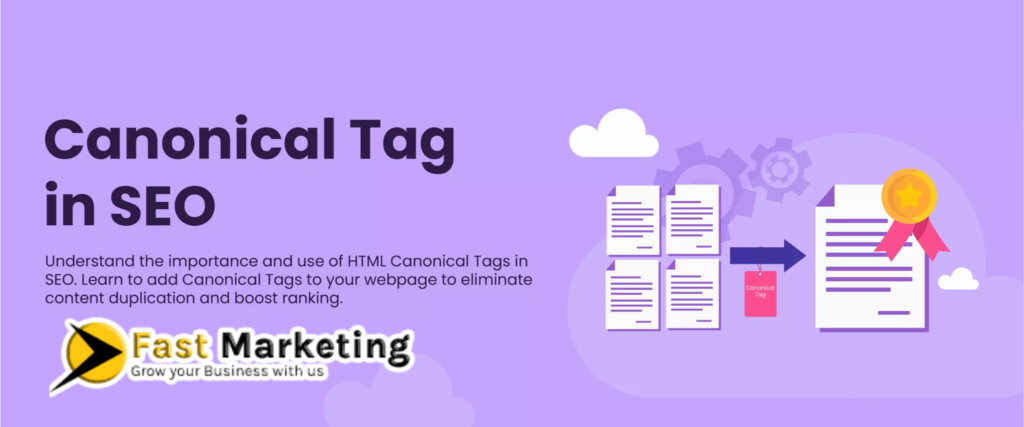Introduction to Canonical Tags
What Are Canonical Tags ? Search engine optimization requires vigilance to sidestep duplicate content challenges which could endanger a website’s rankings. To deftly deal with such replication, canonical tags are a weighty workhorse. This specialized HTML element signifies to search engines which webpage incarnation takes primacy when multiples share comparable or unchanged substance. The tag rel=”canonical” distinctively denotes the sanctioned form. Through judicious application of canonical markings, SEO practitioners can maintain uniqueness on their domains and clarify for algorithms which renditions deserve visibility. Oftentimes the simplest solutions live up to their reputation when properly implemented.
Table of Contents
What Are Canonical Tags
what are What Are Canonical Tags ? The canonical tags are HTML elements for spelling out the preferred version of a page to prevent issues with duplicate content. Search engines might encounter several URLs with the same or extraordinarily similar content, thus diluting the ranking power of such pages. Canonical tags such as () tell the search engines which URL should be treated as original, assuring that it gets correctly indexed and is not penalized. This is particularly important for the e-commerce sites with filtered pages, the blog posts with multiple URLs, or pages accessible via HTTP plus HTTPS. Proper implementation of canonical tags boosts SEO, increases site authority, and guarantees the proper page ranks in search results.

Why Are Canonical Tags Important for SEO
1. Prevents Duplicate Content Issues
While search engines aim to provide users unique information, they occasionally encounter websites where versions of similar content proliferate across URLs. To address such duplicity, their algorithms may discount the prominence of all related pages in search results in favor of a single representative post. By demarcating the authentic source with a canonical tag, practitioners can guide algorithms to attribute full indexing clout to the nominated article and preserve its performance prominence. Variations on the theme remain reachable but ranked subordinate to the validated origin.
2. Consolidates Link Equity
When different URLs show the same content, backlinks would be distributed among those pages, and not consolidate into one specific page for developing the authority of any URL. A canonical tag assigns the link juice to the intended page. This increases the domain authority and ranking potential.
3. Improves Crawl Efficiency
What Are Canonical Tags ? Search engines have crawl budgets, which determine how frequently and how many pages get crawled. Duplicate content can, in fact, squander this budget. Canonicalization optimizes crawls with a clear signal to search engines to take note of the preferred version of a page to ensure all important content is correctly indexed.
How to Implement Canonical Tags Correctly
1. Using the rel=”canonical” HTML Tag
Most commonly, canonicals are implemented by placing the following line within the section of the preferred URL:
<link rel="canonical" href="https://www.example.com/preferred-page/" />This tag tells search engines that the specified URL is the authoritative version of the content.
2. Canonicalization in HTTP Headers
what are canonical tags ? For non-HTML documents such as PDFs, canonical tags can also be specified in the HTTP header:
<Link: <https://www.example.com/preferred-page/>; rel="canonical"The approach thereby assures that even content other than web pages would undergo acceptable canonicalization.
3. Implementing Canonical Tags in XML Sitemaps
what are canonical tags ? Having just canonical URLs in the sitemap assures your preferred alternate versions in search engines. This prevents duplicate or unwanted versions of your content from being indexed by search engines.
Common Mistakes to Avoid When Using Canonical Tags
1. Pointing Canonical Tags to Non-Equivalent Pages
what are canonical tags ? Canonical link should always denote the page representing the same or similar content. If the contents vary greatly, then the search engines are likely to disregard the canonical directive resulting in indexing issues. This has important implications for other parties involved in the search engine ranking process.
2. Using Multiple Canonical Tags on a Single Page

Having multiple tags within the head of a page can confuse search engines and negate the purpose of canonicalization. Always ensure that only a single canonical tag is present for each webpage.
3. Self-Referencing Canonical Tags on Paginated Content
Self-referencing canonical tags are generally a best practice. However, pagination such as example.com/page-2/ needs to be treated differently. Setting all paginated pages to the first page is not effective. Instead, make use of the attributes rel=”next” and rel=”prev” to allow better indexing.
Canonical Tags vs. 301 Redirects: Which One to Use
What Are Canonical Tags ? While both canonical tags and 301 redirects help resolve duplicate content issues, they perform different tasks.
Canonical Tags: Used when a page must stay live in several versions while pointing to the preferred one for search engines.
301 Redirect: Used for visitors being sent from one URL to another and should be permanent so the traffic and link equity go to the new page.
For example, if you need to retain multiple product pages with slight variations, opt for a canonical tag. If a page is permanently redirected, opt for a 301 redirect.
Best Practices for Canonicalization
1. Use Absolute URLs
What are canonical tags ? Always specify absolute URLs (e.g., https://www.example.com/page/) instead of relative URLs (/page/) in canonical tags to prevent ambiguity.
2. Be Consistent with URL Parameters
Ensure that URL parameters (e.g., tracking codes) do not interfere with canonicalization. For example:
- Preferred URL:
https://www.example.com/product/ - Non-preferred URLs:
https://www.example.com/product/?utm_source=googlehttps://www.example.com/product/?ref=affiliate
By setting the canonical tag to the base URL, search engines will ignore tracking parameters when indexing.
Conclusion
Canonical tags are a major factor in search engine optimization because they prevent duplicate content issues and let search engines index the proper version of a webpage. Such tags combine ranking signals and, in turn, reinforce site authority and search performance. Proper use of canonical tags is compulsory in a website that has an interface of multiple URLs where similar content is shown-off, such as e-commerce sites, blogs, and pages dynamically generated. By directing search engines to the preferred URL, canonical tags improve user experience, simplify website management, and boost search rankings. Properly utilized, they ensure visibility, prevent the dilution of content, and maintain a powerful online presence.





